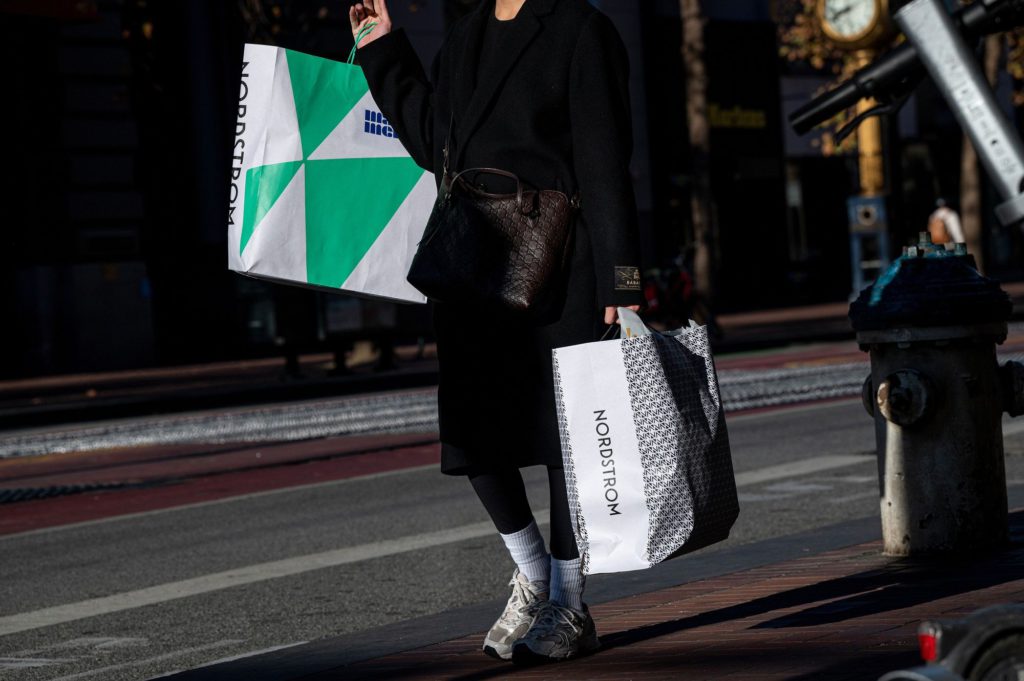US retail sales fell in November by the most in nearly a year, reflecting softness in a range of categories that suggest some easing in Americans’ demand for merchandise.
(Bloomberg) — US retail sales fell in November by the most in nearly a year, reflecting softness in a range of categories that suggest some easing in Americans’ demand for merchandise.
The value of overall retail purchases dropped 0.6% last month after rising 1.3% in October, Commerce Department data showed Thursday. Excluding gasoline and autos, retail sales were down 0.2%. The figures aren’t adjusted for inflation.
The median estimate in a Bloomberg survey of economists called for a 0.2% decline in total retail sales.
Nine of 13 retail categories fell last month, according to the report, including motor vehicles, electronics, furniture and building materials stores. The value of sales at gasoline stations were down 0.1% as pump prices fell.
Sales at restaurants and bars — the only service-sector category in the report — rose 0.9% in November, the fourth-straight increase.
The report suggests some loss of momentum in consumer demand for goods amid high inflation as well as what’s been a shift in preferences toward services. While rising wages and pandemic-era savings have helped support shoppers, Americans are beginning to feel the squeeze — the saving rate is near a record low and credit-card balances have surged.
What Bloomberg Economics Says…
“A surprisingly weak retail print indicates that the Fed’s rate hikes are starting to bite. With Powell signaling at the Dec. 13-14 meeting that the Fed is not done raising rates — and with consumers shifting their spending from goods to services, which largely aren’t captured in the retail-sales report – the weakness could persist in the new year.”
— Anna Wong and Eliza Winger, economists
For the full note, click here.
Other data on Thursday showed that the labor market remains resilient with the fewest weekly initial unemployment filings in more than two months. Meanwhile, two regional Federal Reserve manufacturing gauges showed weaker activity this month.
The Fed is looking for a slowdown in consumer spending that will lower economic growth in order to help stamp out inflation. Policymakers stepped down the pace of interest-rate increases Wednesday as expected, and while inflation has been decelerating in recent months, they acknowledge that price pressures are still far too high.
Widespread Discounts
November includes some of the biggest shopping days of the year, and retailers offered widespread discounts across a range of products like toys, clothing and electronics on Black Friday and beyond. Separate data from Adobe Analytics found online spending during Cyber Week — Thanksgiving to Cyber Monday — was up 4% from last year.
Thursday’s report showed spending at nonstore retailers were down 0.9%, which includes e-commerce businesses like Amazon.com Inc.. One of the only categories to rise were grocery stores amid higher food prices, though the pace was slower than the prior month.
So-called control group sales — which are used to calculate gross domestic product and exclude food services, auto dealers, building materials stores and gasoline stations — fell 0.2%, missing estimates for a 0.1% gain.
The retail sales report can be difficult to draw concrete conclusions from since the data aren’t adjusted for inflation and mostly only capture spending on goods. A fuller picture of November household demand, which includes both price-adjusted figures and services spending, will be released next week.
–With assistance from Jordan Yadoo.
(Adds comment from Bloomberg Economics)
More stories like this are available on bloomberg.com
©2022 Bloomberg L.P.











